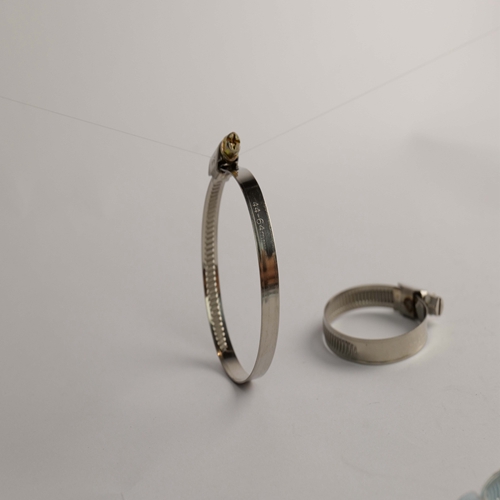- Phone:+86-17331948172 +86-0319-8862898
- E-mail: inquiry@puxingclamp.com
Lis . 09, 2024 13:50 Back to list
Durable Stainless Steel Hose Clamps Manufacturers for Heavy Duty Applications
Heavy Duty Stainless Steel Hose Clamps An Essential Component in Industrial Applications
In today's industrial landscape, the demand for durable and reliable components is ever-increasing. One such component that plays a crucial role in various applications is the heavy-duty stainless steel hose clamp. These clamps are designed for high-performance tasks, ensuring secure fittings and connections in diverse environments. As industries evolve, the manufacturing process, design, and application of these clamps necessitate a closer examination, especially when set against a backdrop of innovations in materials and engineering practices.
Understanding Heavy Duty Stainless Steel Hose Clamps
Heavy-duty stainless steel hose clamps are devices used to attach and seal hoses onto fittings. Their primary function is to provide a strong and dependable connection that prevents leaks, thereby ensuring the efficient operation of machines and systems. These clamps are made from high-grade stainless steel, which offers several advantages, such as resistance to corrosion, heat, and pressure. This makes them particularly suitable for applications in automotive, aerospace, marine, and chemical industries, where conditions can be harsh and demanding.
The Manufacturing Process
The production of heavy-duty stainless steel hose clamps involves several critical steps, starting from the selection of high-quality raw materials. Factories specializing in the production of these clamps often invest in advanced machinery and technologies that facilitate precision crafting.
1. Material Selection The choice of stainless steel is paramount. Different grades of stainless steel, such as 304 and 316, are commonly used. Grade 304 is known for its good corrosion resistance in general environments, while grade 316 offers enhanced resistance against chlorides, making it ideal for use in marine settings.
2. Design Engineering Engineers meticulously design each clamp to meet industry standards and specific client requirements. This involves determining factors such as clamp width, band thickness, and the type of fastening mechanism—be it a worm drive, T-bolt, or clamping mechanism.
3. Manufacturing Techniques Factories utilize various methods, such as stamping, bending, and welding, to form the clamps. Advanced techniques like laser cutting and computer numerical control (CNC) machining allow for high precision and repeatability in production.
heavy duty stainless steel hose clamps factories

4. Quality Control Rigorous testing is conducted to ensure each clamp can withstand specified loads and pressures. Factories often employ non-destructive testing methods to check for defects and ensure the reliability of each product before it reaches the market.
Applications of Heavy Duty Stainless Steel Hose Clamps
The versatility of heavy-duty stainless steel hose clamps allows them to be employed in a wide range of applications
- Automotive Industry These clamps secure hoses in various vehicle systems, including fuel lines, coolant systems, and air intakes, ensuring that vital fluids remain contained and transferred efficiently.
- Industrial Equipment In manufacturing plants, these clamps are indispensable for piping systems, helping to hold hoses and pipes in place while minimizing the risk of leaks.
- Marine Environment Given their corrosion resistance, heavy-duty stainless steel hose clamps are favored in boats and ships, where exposure to saltwater can lead to rapid deterioration of other materials.
- Chemical Plants In environments where caustic substances are present, stainless steel clamps provide the necessary resilience to maintain system integrity.
Conclusion
The industry of heavy-duty stainless steel hose clamps continues to grow, driven by technological advancements and the ever-increasing need for reliability in critical applications. Factories producing these essential components are at the forefront of innovation, ensuring they meet the demanding standards of modern industry. By understanding the manufacturing processes, applications, and the crucial role these clamps play, stakeholders—from engineers to procurement specialists—can appreciate their significance in ensuring operational efficiency and safety across various sectors. As industries continue to evolve, the importance of such dependable components will remain paramount, affirming their place in the toolkit of industrial solutions.
-
High Quality T Bolt Hose Clip Factory & Suppliers Durable Stainless Steel Hose Clamps for Industrial Use
NewsJul.08,2025
-
High-Quality Hose Clamp & T Clamp Hose Clamp Reliable Factory & Suppliers
NewsJul.08,2025
-
Cold Rolled Stainless Steel Band - Premium Quality Supplier & Factory Price
NewsJul.08,2025
-
High-Quality Steel Strip from China Stainless Steel Coil & Cold Rolled Carbon Strip Manufacturer & Supplier
NewsJul.07,2025
-
High-Quality T Bolt Hose Clip from Leading Factory & Suppliers Reliable t bolt hose clip Factories
NewsJul.07,2025
-
Mini Hose Clamp Manufacturer & Supplier Precision Hose Clamps Mini Clamp Factory
NewsJul.07,2025




